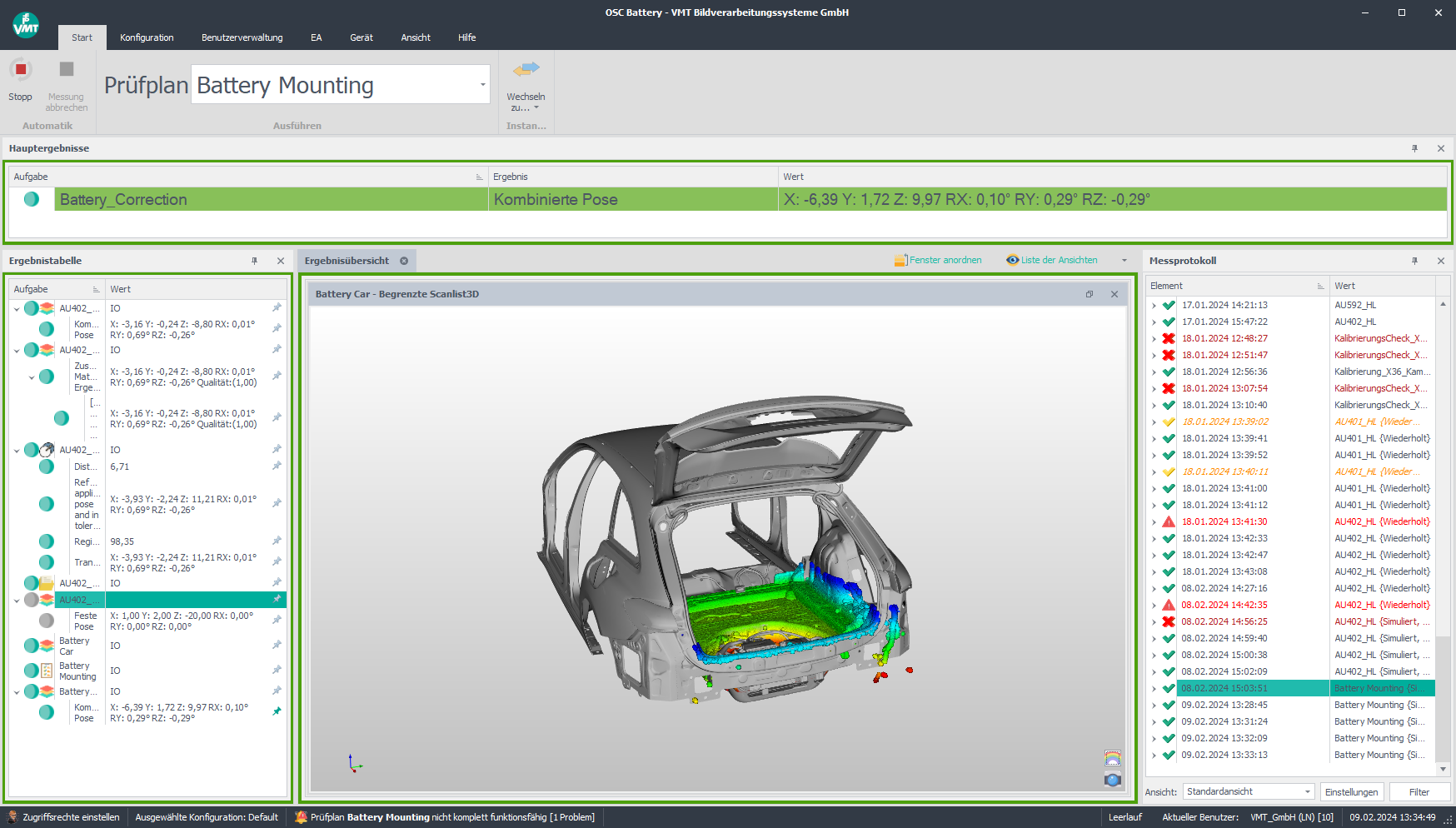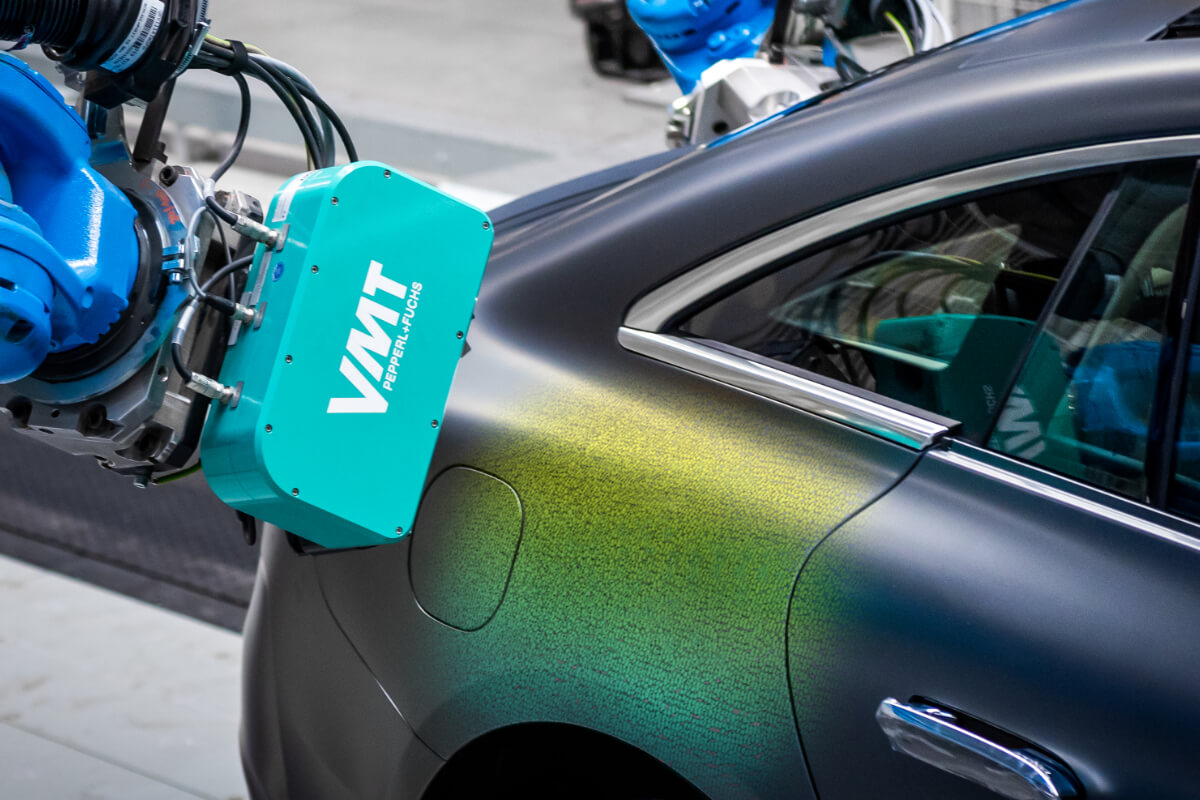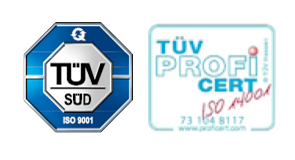3D measurement method with VMT OSC
Point cloud-based 3D positioning with VMT OSC
VMT OSC uses a shape-based measuring method for optical three-dimensional position determination. Instead of edges, holes or other concise object features, the geometric outer contour of a component or workpiece is used wholly or partially in order to determine its position or location and orientation.
It is no longer individual features that are used to determine the 3D position of an object, but its surface geometry or sections thereof. This is recorded with the help of special 3D sensors, whereby millions of individual 3D points, i.e., individual measured values, are combined to form what is known as a ‘point cloud’.
This data forms the basis for a completely new metrological approach for determining the spatial position and orientation of any components in an industrial environment.Using special 3D matching with CAD reference data, the system can precisely calculate the actual component position for guiding arbitrary handling units, for example, a 6-axis robot.

Expertise in sensor technology
VMT OSC uses state-of-the-art 3D sensors for shape-based 3D measurement of the position and orientation of objects. Based on the stereo matching principle, the component is detected by two image sensors to calculate, for example, the 3D position of each individual pixel, regardless of its color, and in a manner that is resistant to extraneous light influences.
The result is a high-resolution 3D point cloud, giving a precise image of the object in the space. VMT OSC compares this with the stored CAD reference data and calculates three-dimensional contour, position and orientation values, which are used for guiding the robots.
In order to meet the highest requirements for accuracy, VMT has developed special multi-stage matching algorithms with its experienced development team, which guarantee the highest possible accuracy with low calculation times.
VMT uses the optimal 3D sensor available on the market for the specific application to best meet the respective process requirements.






